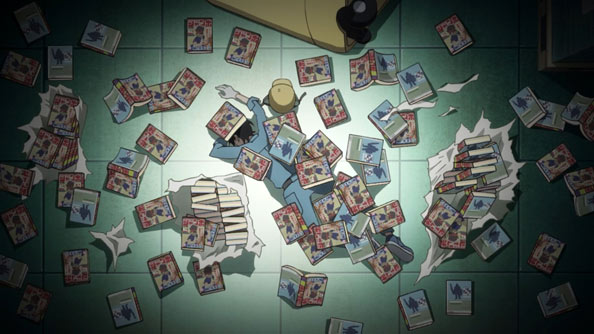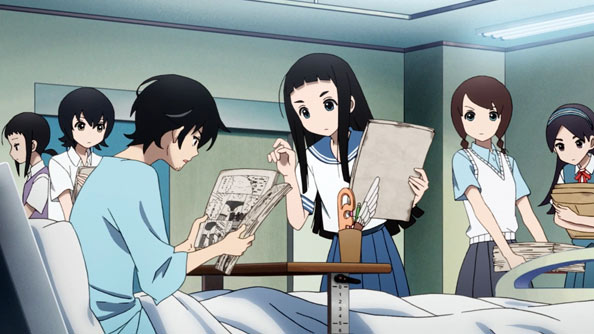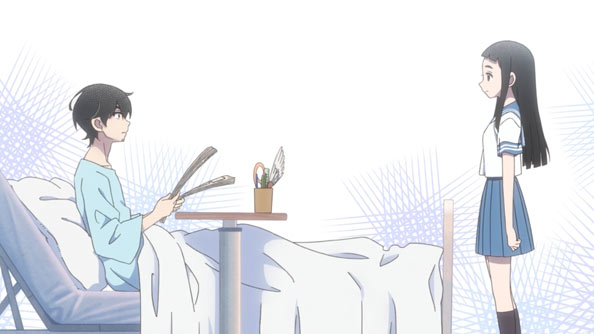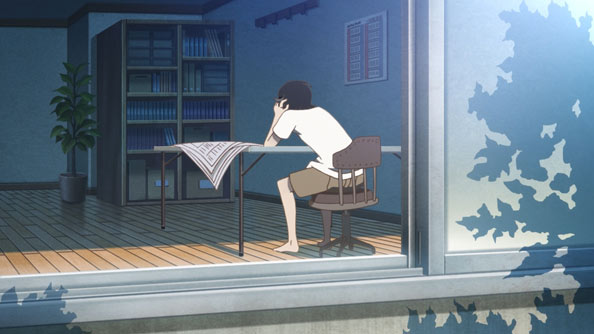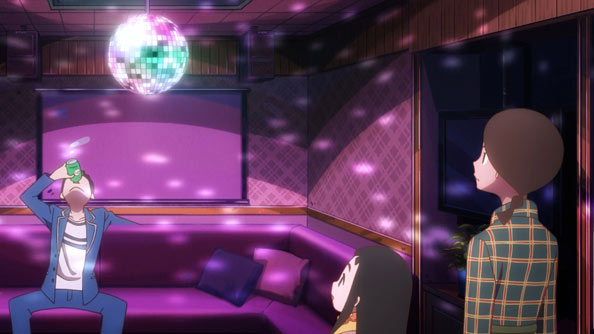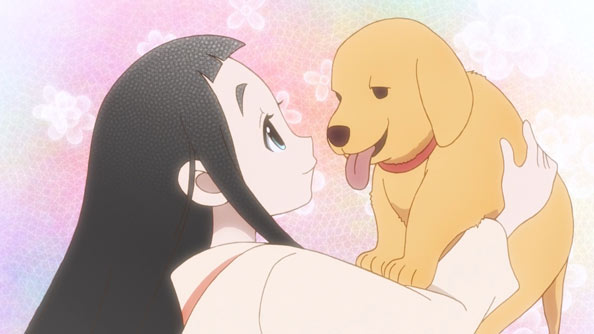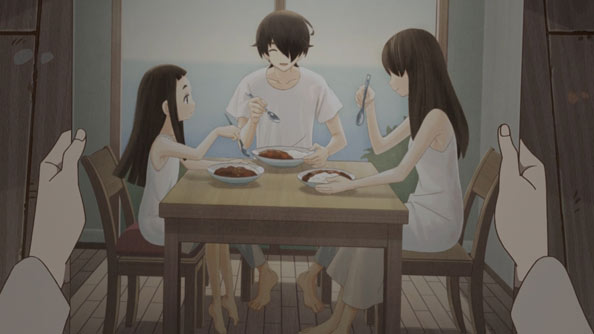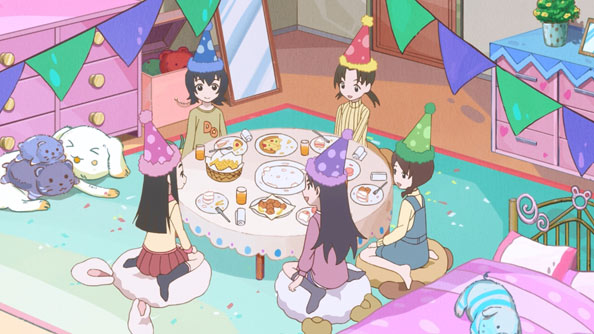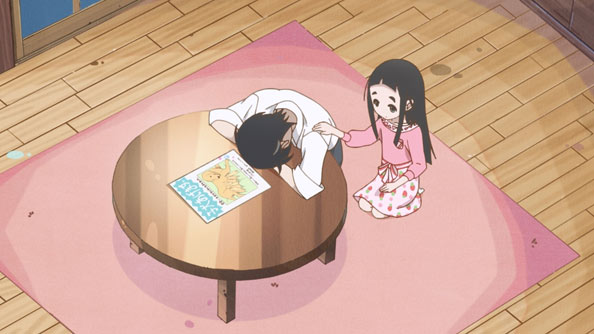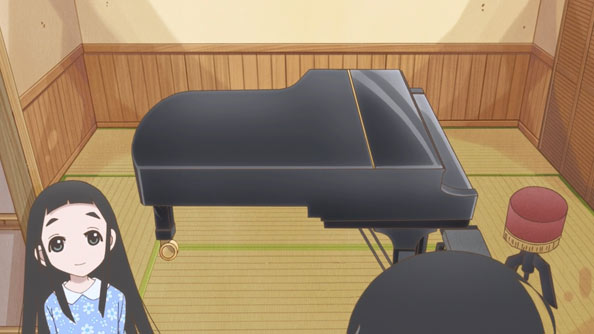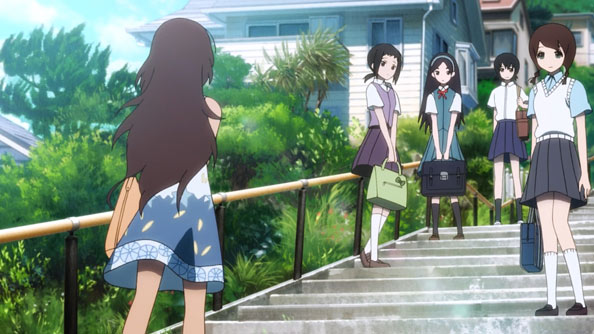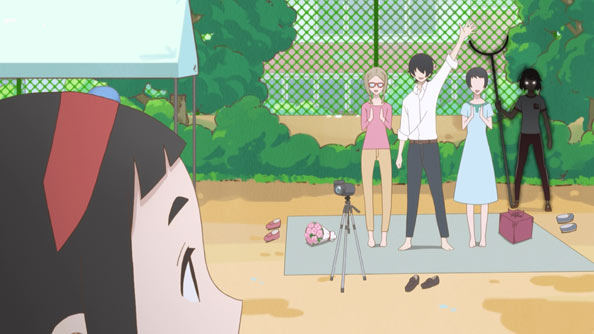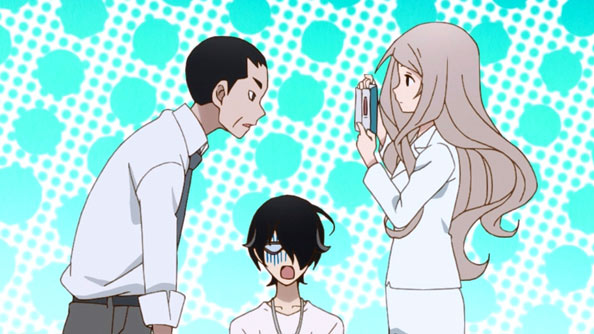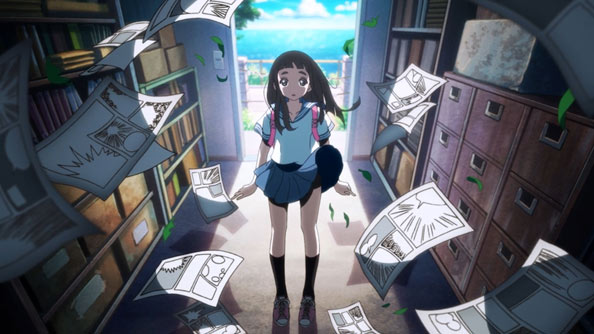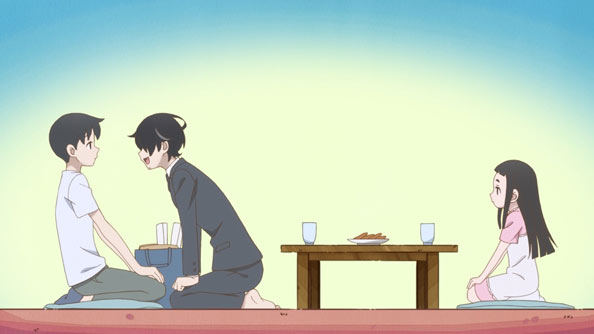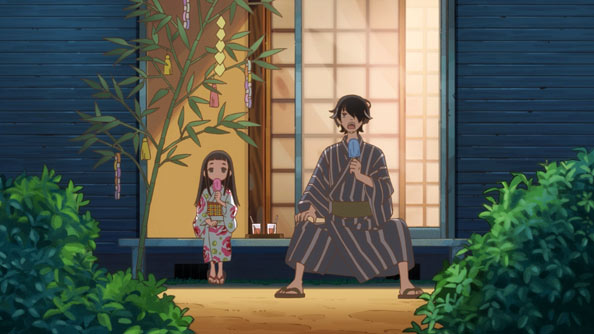Kakushigoto’s finale is truly a crowd-pleaser, and I mean that in the best way. It spends its entire runtime in the “future” and painstakingly reveals all of the mysteries and answered all of the questions we might’ve gathered from the slow trickle of information throughout the season. It expertly released and justified all that built-up anticipation to deliver one satisfying reveal after another—including several secrets we didn’t consider!
For one thing, neither we nor Hime had any idea Kakushi was the love child of a kabuki actor and his mistress (though it explains a lot!). We didn’t know he had a half-sister, who had a son the same age as Hime, who visits her at the Kamakura house.
Among the other blanks of Kakushi’s story are also filled in, we learn that for ten years after his wife was lost at sea he spent a significant amount of his income on continued searches, not believing she was gone. When Hime was in middle school the tabloid article came out that killed his confidence in ever being able to make readers laugh again.
After finishing Tights and putting his pen down for good, Kakushi took on a number of menial labor jobs, culminating in perhaps the most ironic and symbolic accident imaginable: in a forklift accident he was crushed by a palate full of the very manga publication he quit drawing for.
Kakushi has been in a coma for over a year, but he same day Hime’s cousin visits her, he regains consciousness, and Ichiko and the Detective Agency escort Hime to the hospital, where they learn that he has amnesia—specifically, he has no memories of the last seven years.
For Hime to finally see her father awake only for him to not recognize her seems almost too cruel, but I was confident Kakushigoto would find a clever way for things to eventually work out. Sure enough, the key to restoring Kakushi’s memories is the thing he loved doing for a living, despite keeping it secret from Hime.
Kakushi’s seven-year gap means he’s stuck in the time when Hime was ten (i.e. all those episodes that felt like the present at the time but are now the past). As such, he believes Tights in the Wind is still in publication…and he’s eager to get back to work.
His old team of assistants (including Rasuna, who is now an accomplished mangaka in her own right, with Tomaruin as her editor) gets back together, and turn the hospital room into a studio. Assuming Hime is a new assistant, he asks her to go to his house and make sure his daughter isn’t lonely. Of course, her daughter will always be least lonely when she’s with her dad.
Seeing her dad working for the first time is momentous for Hime; so much so that seeing him so happy doing what he loves makes her hesitant to continue efforts to restore his memories. He’ll get back the good times in the last seven years, but also all the heartbreak and despair.
What ultimately sways her is when she asks him if he’s happiest being able to continue drawing his manga, and he says no; the one thing that makes him happier than anything would be Hime growing up big and healthy. Hime rushes back to Kamakura, the Detective Agency in tow, and returns to the room with all of his manuscripts of the last seven years.
As Kakushi looks them over and remembers drawing them, he also remembers moments of Hime’s life that took place when he drew them. As the veil on those seven years of memories is pulled back, he watches Hime grow into the 18-year-old woman before him and finally recognizes his daughter. His first instinct, of course, is to try to hide the manga from her; to maintain the secret.
Now, as Kakushi prepares a comeback (perhaps with a story very similar to what we just watched…very meta!), we see the tables have turned: Hime has secrets of her own, like the fact that while she’s an accomplished and award-winning painter following her mother’s father’s footsteps, she also has a passion for drawing manga, something she’ll keep secret from her dad for a while. It’s only fair!
Kakushigoto was a beautiful blending of the clever, sometimes goofy, sometimes artfully intricate “miscommunication” humor of author Kumeta Kouji with genuine and powerful emotional stakes. It never felt too melodramatic or goofy because the drama and levity were always so well balanced. Indeed, that made it feel more real, despite how convoluted some of the mysteries and secrets turned out to be. The wit was sharp, while the heart was always warmed.
No matter how many walls or veils or feints Kakushi put up to keep his precious daughter from the truth of his livelihood, he couldn’t hide his true passion from her forever. Nor could the truth that whether he could feed that passion for a living or not was immaterial in the face of his overarching priority: ensuring Hime had a stable, happy childhood full of laughter and fun.
Hime is as stunningly awesome and beautiful an adult as she was an adorable, air-headed kid, and she has a bright future whether she pursues painting, manga, both, or neither. It can be said without reservation: Papa did good.


